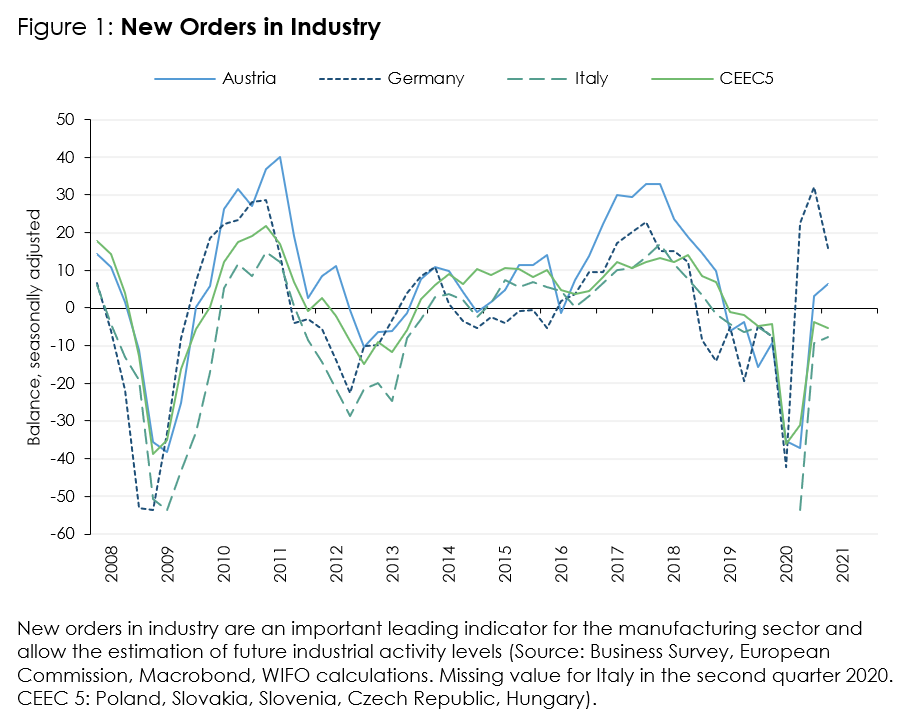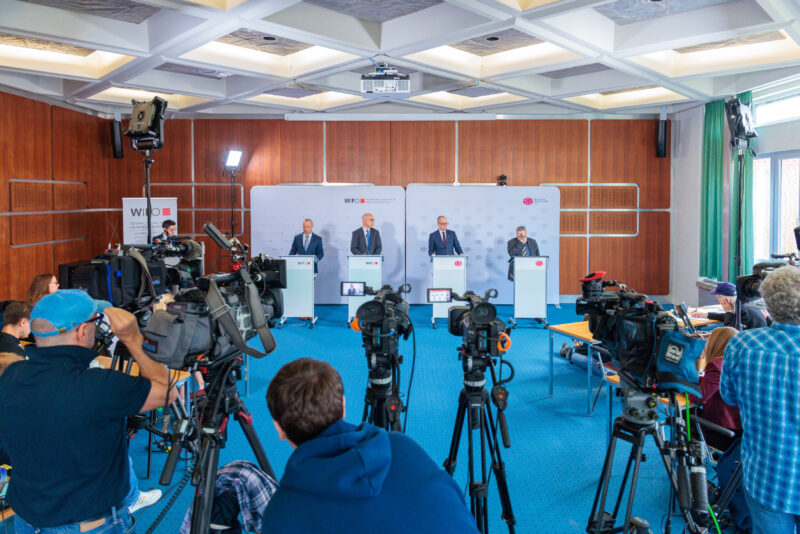
Economic Development Remains Sluggish
"Austrian industrial companies have recently recorded an increase in new orders; however, compared to Germany, the results are modest. Nevertheless, the high lead of the indicator for Germany also gives hope for a favourable development of the industrial activity in Austria," says Christian Glocker, author of the current WIFO Business Cycle Report.
The approval of several vaccines and the vaccinations administered in some countries as of December 2020 gave hope for an end to the pandemic. Despite high and increasing levels of infections, economic activity seems to have adapted to the health policy constraints over time.
According to the Federal Reserve's weekly economic index, economic output in the USA in January 2021 was only slightly below the level of the previous year. The EU member countries were hit by a second wave of the pandemic in fall 2020, which dampened economic development in the fourth quarter. Economic output decreased by 0.5 percent compared with the previous quarter. Leading indicators point to sluggish development in the first quarter 2021.
In Austria, economic output declined by 4.3 percent in the fourth quarter 2020 compared with the previous quarter; the effects of the health policy measures were thus clearly reflected. In 2020 as a whole, seasonally and working-day adjusted GDP fell by 7.4 percent. On the demand side, the decline is characterized by weak consumption and exports; on the supply side, the low level of activity in the service sectors heavily affected by regulatory measures – such as accommodation, catering and retail – contributed significantly to the output contraction.
A synopsis of the leading indicators paints a pessimistic picture: the WIFO Business Climate Index, which is based on a monthly business survey conducted by WIFO (WIFO-Konjunkturtest), fell in January compared with the previous month. Companies, especially those in the service sector, continue to assess the current situation sceptically; their expectations were more pessimistic than in December 2020. As a result of the health policy measures, the majority of Austrian companies expect the economy to develop weakly in the coming months. Consumer confidence largely stagnated recently; most of the sub-indices remain below the long-term average. The Weekly WIFO Economic Index (WWWI) also points to an unfavourable development: seasonally adjusted economic activity in the third week of January was 13.6 percent lower than in the same week a year earlier. This continued the negative trend from the end of 2020. On a monthly average, the indicator in January was 12.6 percent below the same month last year this represents a deterioration compared to December 2020, when the year-on-year decline was 8.8 percent.
The measures taken to contain the COVID-19 pandemic are having a significant impact on the labour market: According to preliminary estimates, the number of persons in active employment was 120,000 lower in January than a year earlier (–3.2 percent), while the number of unemployed registered with the AMS was around 113,000 higher (+31.8 percent). In addition, 470,000 employees were registered for short-time work at the end of January (31 January 2021). The seasonally adjusted unemployment rate according to the national definition is thus likely to have been 9.6 percent in January.

Please contact
























